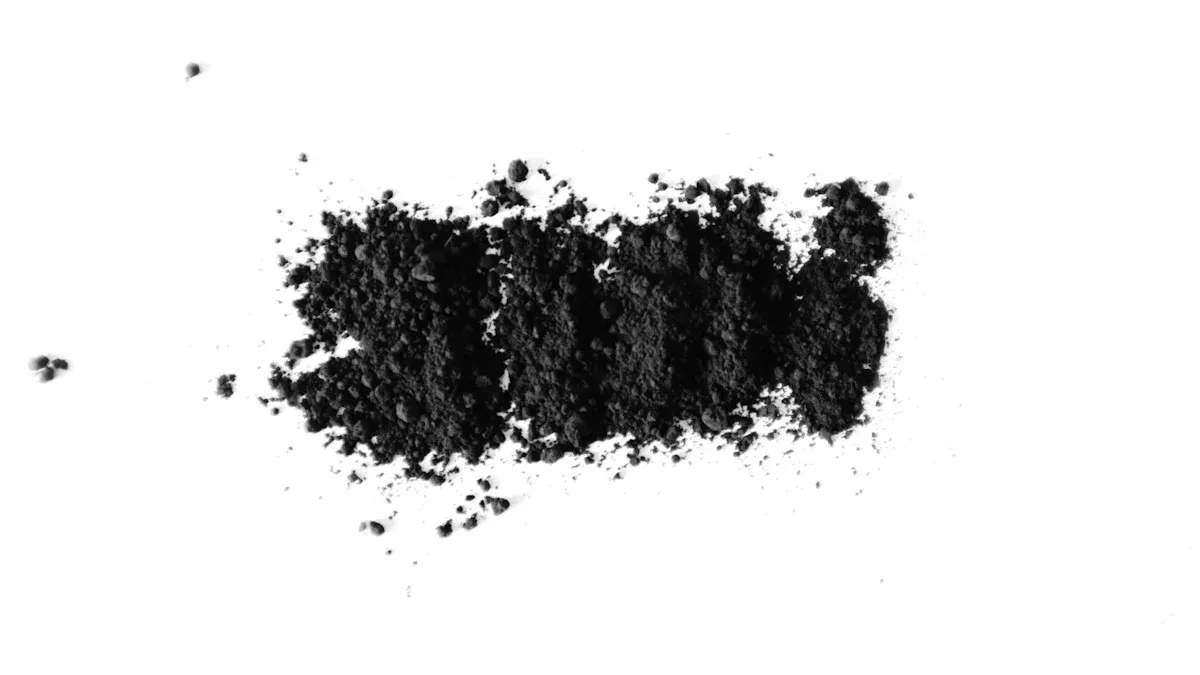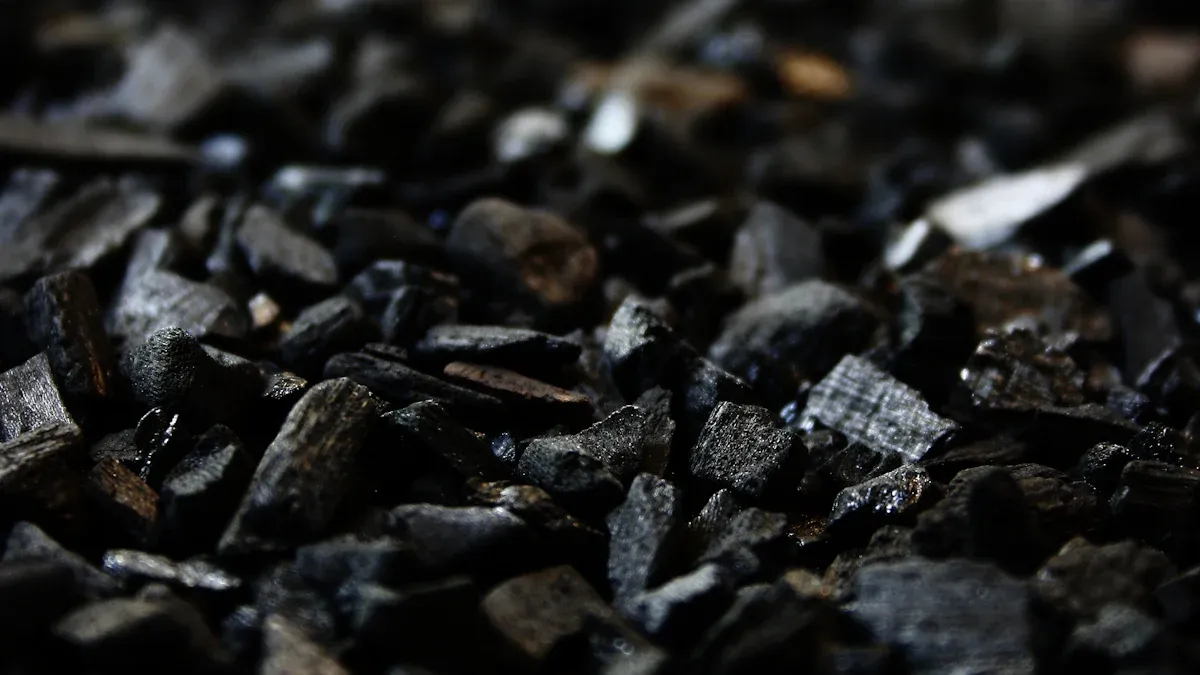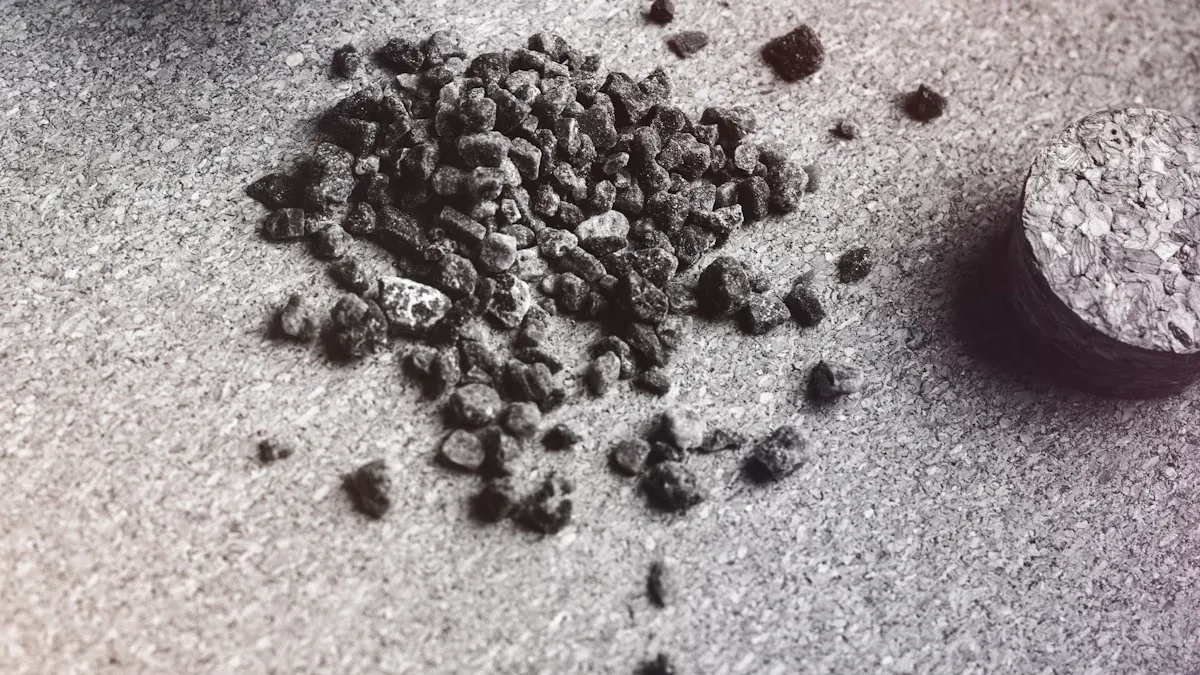
Choosing the right type of activated carbon can make a big difference in purification results. Many industries rely on both granular and powdered forms to meet specific needs. For example, water treatment plants often select granular activated carbon for removing chlorine and odors, while powdered activated carbon is popular in batch processes for its rapid adsorption. Market reports show that Asia Pacific leads in usage, and demand continues to grow worldwide. Ningxia Yongruida Carbon Co., Ltd. provides expert solutions for these applications.
Granular activated carbon (GAC) has larger particles and works best for long-term, continuous filtration with easy regeneration and reuse.
Powdered activated carbon (PAC) has very fine particles that provide fast purification, ideal for short-term or emergency treatments but usually single-use.
GAC offers strong mechanical stability and cost-effectiveness over time, while PAC is less expensive upfront but may require frequent replacement.
Choosing the right carbon depends on contaminant type, treatment method, system size, regeneration needs, and budget.
Proper handling and expert advice improve safety and purification results when using either GAC or PAC.
Particle size plays a major role in how activated carbon works. Granular activated carbon (GAC) has much larger particles than powdered activated carbon (PAC). GAC comes in the form of loose granules, while PAC consists of very fine powder. The table below shows the typical particle sizes:
|
Carbon Type |
Particle Size (Median, d50) |
Unit |
Notes |
|---|---|---|---|
|
sPAC |
1.0 |
µm |
Superfine powdered activated carbon |
|
PAC |
30.1 |
µm |
Powdered activated carbon |
|
GAC |
N/A |
N/A |
Larger, loose granules; no exact size given |
GAC’s larger size allows water to flow through quickly, making it ideal for whole-house filtration. PAC’s fine particles provide more contact with contaminants, which helps in rapid purification.
Surface area determines how much contaminant the carbon can capture. Activated carbon with a higher surface area offers more sites for adsorption. PAC, with its smaller particles, has a greater surface area than GAC. This means PAC can adsorb more impurities in less time.
Note: Surface area alone does not decide performance. The size and shape of the pores, as well as the chemical groups on the surface, also affect how well the carbon removes specific contaminants.
Activated carbon develops its surface area through the creation of tiny pores during activation.
The right activation temperature and process maximize surface area and adsorption ability.
Different raw materials, such as coconut shells or wood, produce carbons with different surface areas.
Adsorption is the process where contaminants stick to the surface of activated carbon. Both GAC and PAC remove impurities, but they do so at different rates and with different strengths.
|
Activated Carbon Type |
Particle Size (mm) |
Adsorption Rate |
Adsorption Capacity |
Advantages |
Typical Applications |
|---|---|---|---|---|---|
|
PAC |
< 0.18 |
High |
Rapid adsorption, high surface area |
Fast purification, effective for small pollutants |
Water treatment, air purification |
|
GAC |
0.2 to 5 |
Moderate |
Good balance of capacity and flow |
Reusable, longer contact time |
Continuous filtration, home water filters |
PAC works best for quick removal of small contaminants. GAC is better for long-term use and larger molecules, as it allows water or air to pass through slowly, giving contaminants more time to stick to the carbon.
Regeneration means restoring activated carbon so it can be used again. GAC is easier to regenerate because its larger granules withstand the heat and pressure of cleaning processes. Many water treatment plants reuse GAC several times, which saves money and reduces waste.
PAC, with its fine powder form, is usually not regenerated. The small particles break down or get lost during use, so most facilities replace PAC after each use. This makes PAC more suitable for single-use or batch processes.
Cost depends on several factors, including raw materials, production methods, and how often the carbon can be reused.
GAC costs more to produce because it requires strict size and density control. However, its ability to be regenerated makes it cost-effective for large-scale, continuous operations.
PAC is less expensive to manufacture and offers high adsorption efficiency. It is a good choice for short-term or emergency treatment, but frequent replacement can increase long-term costs.
The type of raw material affects price. Coal-based carbon is often more affordable for industrial use, while coconut shell-based carbon, known for high adsorption, may cost more.
Market factors, such as supply chain disruptions and environmental regulations, also influence prices.
Tip: Facilities should consider both the upfront cost and the long-term operational expenses when choosing between GAC and PAC.

Granular activated carbon (GAC) appears as a black, porous, and odorless material. Manufacturers shape it into grains that range from coarse particles to fine granules. The following table summarizes key physical and chemical properties:
|
Property |
Description / Range |
|---|---|
|
Appearance |
Black, porous, odorless; grain shape varies |
|
Particle Size |
1–6 mm diameter; length about 0.7 to 4 times diameter |
|
Odor and Taste |
Odorless, tasteless |
|
Solubility |
Insoluble in water and organic solvents |
|
Packing Density |
0.3–0.6 g/ml |
|
Micropore Volume |
0.6–0.8 ml/g |
|
Specific Surface Area |
500–1500 m²/g |
|
Chemical Composition |
Mainly carbon, with hydrogen, oxygen, and trace minerals |
|
pH Range |
3 to 9 (optimal 4.0–4.8) |
|
Adsorption Characteristics |
Micropores, transitional pores, macropores |
|
Mechanical Strength |
Increases above 700 ℃ |
GAC remains stable in water and most chemicals. Its high surface area and pore structure allow it to trap many contaminants.
GAC serves many roles in water and air purification. Common uses include:
Removing organic chemicals, chlorine, and hydrogen sulfide from drinking water
Eliminating taste and odor compounds in municipal water treatment
Treating groundwater and industrial wastewater
Adsorbing volatile organic compounds (VOCs) and odors in air purification systems
Capturing mercury emissions from industrial sources
Supporting advanced filtration in specialized applications, such as space technology
GAC offers several benefits in purification processes:
High adsorption capacity for a wide range of contaminants
Reusability through regeneration, which lowers long-term costs
Enhanced denitrification efficiency in wastewater treatment, even under low-temperature conditions
Reduction of nitrous oxide emissions, supporting climate action goals
Improved carbon utilization, which decreases the need for external carbon sources
Stable performance due to strong mechanical strength and resistance to breakdown
GAC aligns with sustainable development goals by improving water quality and reducing environmental impact.
Some limitations exist when using GAC:
Lower removal capacity for certain contaminants, such as PFAS, compared to ion exchange resins
Larger system footprint required for installation
Potential for channeling and bypass, which can reduce effective adsorption
Regular replacement needed as carbon becomes saturated
Sensitivity to high temperature and humidity, which may affect performance
Does not remove particulate matter, so it often works alongside particle filters
GAC remains a reliable choice for many purification needs, but users should consider these factors during system design and operation.

Powdered Activated Carbon has a very fine particle size, usually less than 0.188 mm. These tiny particles create a large surface area, which helps the carbon adsorb many contaminants quickly. The powder form makes it easy to mix into water or other liquids. PAC is made from materials like wood, coal, or anthracite. The fine texture allows for fast reactions with pollutants. PAC can form dust during handling, so workers often use special equipment to control it.
|
Property |
Description |
|---|---|
|
Particle Size |
< 0.188 mm |
|
Surface Area |
High |
|
Appearance |
Black, fine powder |
|
Raw Materials |
Wood, coal, anthracite |
|
Handling |
May produce dust, needs control |
Powdered Activated Carbon is popular in municipal and industrial water treatment. It works well in batch processes and smaller systems. PAC removes chlorine, pesticides, organic compounds, and bad odors. Many water treatment plants use PAC to improve taste and odor. Industrial facilities rely on PAC to treat wastewater from chemical, pharmaceutical, food, and beverage production. PAC also helps in food decolorization and odor control.
It improves water quality by trapping pollutants.
PAC acts quickly and is often used alongside other treatment methods.
PAC does not remove most heavy metals or microbes.
Ningxia Yongruida Carbon Co., Ltd. supplies high-quality PAC for these applications. Their team matches PAC types to customer needs, ensuring effective purification.
Powdered Activated Carbon offers several benefits:
PAC adsorbs micropollutants efficiently.
It can be added during coagulation, forming larger flocs that settle faster.
PAC reduces sludge volume and improves solid–liquid separation.
PAC enhances taste and odor removal in treated water.
PAC improves membrane performance and helps control biofouling.
PAC provides cost advantages compared to some cleaning methods.
PAC’s fast action and flexibility make it valuable for emergency or short-term treatments.
PAC may lose adsorption capacity if pores become clogged.
Sometimes, PAC releases previously adsorbed contaminants back into the water.
Complex contaminants can behave unpredictably on PAC.
Microbial growth may occur on the carbon surface, forming biofilms.
Regulatory compliance can be difficult due to unpredictable contaminant release.
PAC needs frequent replacement, which increases costs.
Disposal of spent PAC can raise environmental concerns.
Handling PAC requires care to manage dust and sludge, and facilities must plan for safe disposal.
Granular activated carbon (GAC) works best in long-term, continuous treatment systems. Municipal drinking water plants, industrial wastewater facilities, and groundwater remediation projects often use GAC. Its structure supports steady contaminant removal and fits well in large filtration units. GAC also appears in whole-house water filters, where fast water flow and ongoing chemical reduction are important. Powdered Activated Carbon (PAC) fits short-term or emergency needs. Water treatment plants use PAC during seasonal contamination spikes or for rapid response. PAC’s fine particles allow flexible dosing and quick mixing into water. Point-of-use filters, such as faucet attachments, often use PAC for batch or short-term treatment.
The table below shows how GAC and PAC perform side by side:
|
Contaminant/Parameter |
GAC Performance |
PAC Performance |
|---|---|---|
|
Pharmaceuticals & Benzotriazole |
Comparable removal at similar doses |
|
|
PFAS (PFOA, PFOS) |
>80% removal at higher doses |
Effective, but needs higher doses |
|
Total Suspended Solids (TSS) |
>80% removal, supports biological activity |
Lower TSS removal |
|
Heavy Metals (Cd, Pb, Cu, Ni) |
>80% for Cd, Pb; >60% for Cu, Ni |
Less effective |
|
Microbial Resistance |
~1 log removal, supports biological activity |
Partial retention |
|
Regeneration |
Possible, supports reuse |
Not possible |
GAC and PAC both remove many contaminants well. GAC offers extra benefits, such as biological activity and regeneration.
Handling requirements differ for each type. GAC’s larger granules make it easy to load into filters with little dust. Workers can handle GAC with basic safety gear. PAC needs more care. Workers should wear personal protective equipment when handling PAC. They should store PAC in dry, well-ventilated areas. Dust control is important to protect health and the environment. Ningxia Yongruida Carbon Co., Ltd. provides guidance on safe handling for both forms.
GAC costs more to produce because of strict size and density controls. Its ability to regenerate and long lifespan make it cost-effective for large, continuous operations. PAC has a lower initial cost and works well for short-term or emergency use. Frequent replacement and special handling can raise long-term costs. Ningxia Yongruida Carbon Co., Ltd. helps customers choose the most economical option for their needs.
Selecting the right activated carbon depends on several important factors. Each application has unique needs. The following points help guide the decision:
Type of Contaminant: Some contaminants respond better to granular activated carbon. Others, like certain organic compounds, may need the fast action of powdered activated carbon.
Treatment Method: Continuous systems often use granular activated carbon. Batch or emergency treatments usually work best with powdered activated carbon.
System Size and Flow Rate: Large systems with high flow rates benefit from the durability of granular activated carbon. Smaller or temporary setups can use powdered forms.
Regeneration and Reuse: Facilities that want to reuse carbon should consider granular activated carbon. Powdered forms are usually single-use.
Budget: Upfront and long-term costs matter. Granular activated carbon may cost more at first but lasts longer. Powdered activated carbon offers a lower initial price but may need frequent replacement.
Tip: Always match the carbon type to the specific water or air quality goals.
Many users make similar errors when choosing activated carbon. Avoiding these mistakes saves time and money.
Ignoring Application Needs: Some choose based only on price, not on what the system requires.
Overlooking Regeneration: Facilities sometimes forget to consider if the carbon can be reused.
Mismatching Particle Size: Using the wrong size can lead to poor filtration or system clogs.
Not Planning for Handling: Powdered activated carbon can create dust. Proper handling equipment is necessary.
Skipping Expert Advice: Some users do not consult with specialists. This can lead to less effective purification.
Note: Mistakes in selection can reduce system performance and increase costs.
Granular and powdered activated carbon differ in particle size, surface area, adsorption rate, and regeneration ability. Matching the right type to each application ensures better purification results. Experts recommend considering the specific contaminants, flow rate, and filter standards before making a choice.
Granular activated carbon suits continuous filtration and heavy-duty needs.
Powdered activated carbon works well for rapid, batch treatments.
For further guidance, readers can:
Contact specialists like Ningxia Yongruida Carbon Co., Ltd. for tailored solutions.
Expert advice helps users select the best activated carbon for water, air, or industrial purification projects.
Granular activated carbon (GAC) has larger particles and works well in continuous filtration systems. Powdered activated carbon (PAC) has fine particles and acts quickly in batch treatments. Each type fits different purification needs.
Yes, both types can remove unwanted tastes and odors. GAC works best in large, ongoing systems. PAC provides fast results in smaller or emergency treatments.
Ningxia Yongruida Carbon Co., Ltd. offers expert advice. Their team matches the right type of activated carbon to each customer’s purification needs, system size, and budget.
Workers should use safety equipment when handling PAC. The fine powder can create dust. Ningxia Yongruida Carbon Co., Ltd. provides guidance on safe handling and storage.
Yes, GAC can be regenerated and reused several times. This feature makes it cost-effective for large water treatment plants and continuous systems.

Ningxia Yongruida Carbon Co,.Ltd was founded in
2003.With an area of over 50000 square meters ,our
factory is located in the city of Shizuishan Ningxia .